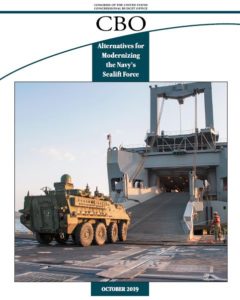
A new Congressional Budget Office (CBO) report says the Navy’s estimate for the cost of potential new sealift vessels is about double what standard practice expects. The report released last week, Alternatives For Modernizing the Navy's Sealift Force, analyzed the Navy’s March 2018 plan to modernize the sealift force over the next 30 years. It compared the Navy’s estimate to four alternative plans. The Navy’s plan consists of modernizing the current sealift force of 75 ships by extending the service…

 By
By 











